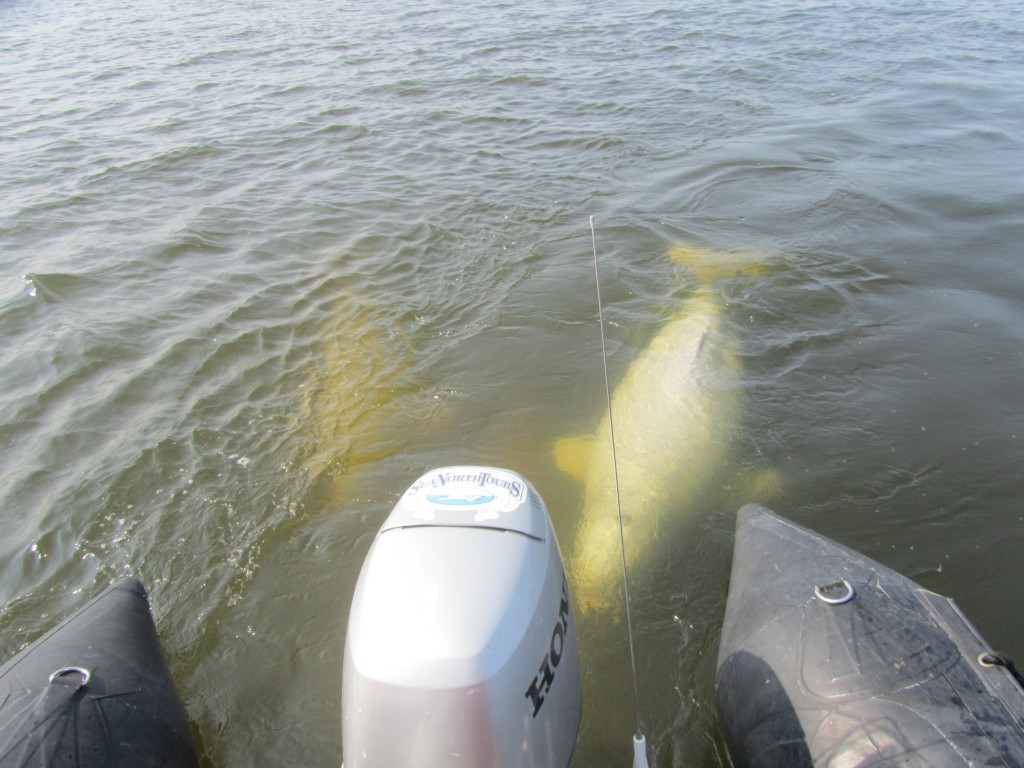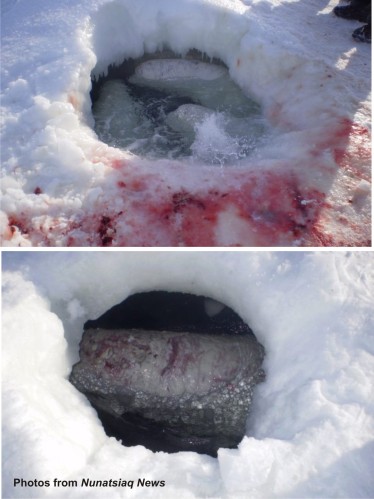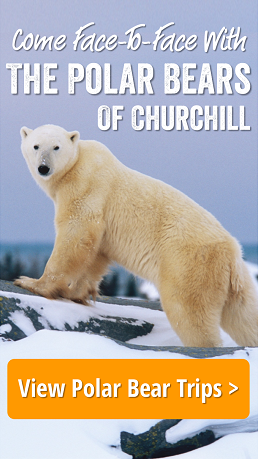by Steve Selden | Apr 25, 2015 | Conservation
I still remember the most amazing and intriguing sounds of Churchill’s Arctic summer were the sounds captured from the hydrophone we would drop into the Churchill River when out on the water with the beluga whales. Those clicks, shrieks and shrills coming from the depths of the chilly water mesmerized travelers and myself often for hours. Belugas are in fact nicknamed the “canaries of the sea” because of the incredible cacophony of sounds they produce.

Belugas at the back of the zodiac. Stephanie Fernandez photo.
These sounds are the mammal’s main form of communication and a key to their survival. At least half of the year belugas are navigating in the dark…quite literally. Under the sea ice in dark waters far north, these whales rely on sound from echolocation off the ice as well as communicating with each other. Sound without sight is their world a good part of their lives.
Biologists have begun to decipher the complex system of communication placing behavioral actions to the different and quite distinct clinks and squeals. hydrophones with recording ability are helping extensive research away from the beluga’s natural habitat in the Arctic.
However communication isn’t the only reason for belugas emitting sound through their nasal sacs near their blowhole. They have no vocal chords.These whales also use rapid strings of clicks to echolocate surfaces and food in their environment. The clicks bounce back to them and absorbed in their bulbous melons of their foreheads to form shapes and identify the prey. They also can wiggle the melon somewhat in order to specifically aim these sounds in different directions. Their unique ability to interpret returning sound wave lengths works just like our eyes work for humans.

Beluga whales echolocate using the melon on their foreheads. Steve Selden photo.
Evidence that beluga communication develops when calves are born stems from the evidence that a community of whales acting as sisters, aunts, cousins and grandmothers care for the calves as “allmothers”. They even produce milk when babies from other mothers are born regardless if they have a nursing calf or not. This early exposure to a language sets the base for more to come as the calves develop and interact with the pod.
Controlling the human – made noise in waters inhabited by belugas is of paramount importance to preserve their language and ability to communicate.
by Steve Selden | Apr 13, 2015 | Churchill Photography
These fresh images from Churchillian Katie DeMeulles reveal just a glimpse of Spring in Churchill. The main clue is the ice floe edge is fairly close to shore and the open water lead is widening. Of course that could close up again with some north winds but spring is imminent. It’s such an amazing time of year in Churchill!

Willow ptarmigan in the willows. Katie de Meulles photo.

The ice floe edge is closer to shore. Katie de Meulles photo.

Willow ptarmigan camouflaged in the grass. Katie de Meulles photo.

The ice floe edge is close to the rocky shore of Churchill. Katie de Meulles photo.

The Ithaca shipwreck still frozen in the Hudson Bay. Katie de Meulles photo.

Ptarmigan on the Precambrian shield in Churchill. Katie de Meulles photo.
by Steve Selden | Feb 26, 2013 | Churchill News, Tour News
In the Churchill Arctic summer, between two to three thousand beluga whales voyage southward across the vast Hudson Bay from the Hudson Strait which flows into the Atlantic Ocean to summer in the estuaries around Churchill. These whales winter in the straits since water currents provide life -giving polynas-open water areas where whales and other marine life can surface for air intake. During the Spring as they start their trip, ice still somewhat chunks up the Hudson Bay and makes the trip perilous. Polar bears out on ice floes can sometimes gain access to the whales and find a hearty meal. This can also occur in winter when whales get trapped using only a small opening in the ice when accessible leads or smaller polynas have close up.

Why, one may ask, am I talking about beluga whales in the middle of the northern winter? Recently, documentation of beluga whales trapped in ice being eaten by polar bears have brought attention to the fragile lifestyle of these marine animals. While global warming might not be ideal for polar bears, beluga whales would welcome a little more ice free areas in the far north. It’s not uncommon for belugas or other whales to become trapped in vast expanses of floe ice. With few openings to the world above the whales become isolated unable to reach the next blowhole. belugas can stay below the water surface for about 15 minutes at a depth of up to 66 ft. When they cannot find another air source they must remain at the one they have.
While guiding Churchill Summer trips for over 10 years we were able to get very close to these majestic animals. Quite often we see scars or slashes on the backs of their matte white bodies. These scars or markings are used to identify the belugas much like larger whales are identified by their tale fluke markings. Beluga’s tale flukes are small and rarely seen on a consistent basis. I would inform travelers, without exact evidence, that these markings were sometimes from polar bears attempting to kill the whales. This could really only be true when the whales are trapped within the ice as polar bears would have little chance catching up with a whale in the water. As we can see here this has happened just recently before our eyes in the Arctic.

And, as we can imagine when nature provides a disaster for one species, other species benefit from the misfortune. polar bears predate on the whales and humans then predate on both bears and the whales. The circle of life is continuous.











